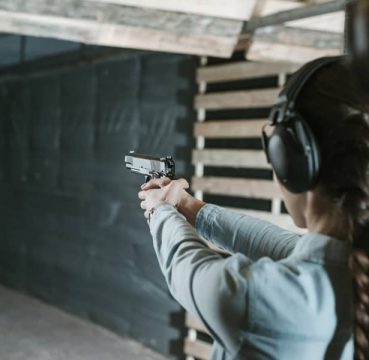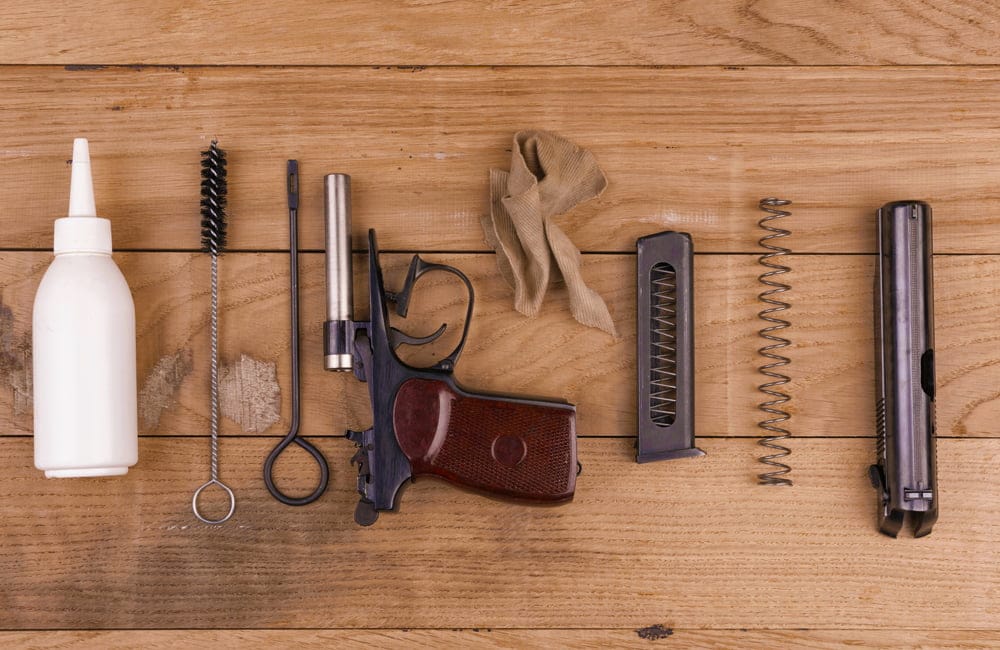Table Of Contents
Gun safety classes are a necessity for any new gun owner or novice hunter. When researching a local class on gun safety, be sure that the class covers the basics of gun safety, outlined here.
How to Choose Gun Safety Classes
There are different types of gun safety classes available. What is right for you might not work for someone else so it’s important to learn about what’s out there and figure out what will benefit you the most.
Online gun safety classes are an option. These classes review what you need to know in terms of laws and safety measures. They can also teach you some of the basics about safe gun usage, but they aren’t going to give you the important hands-on experience. If you opt to learn about gun safety online, just make sure you are also committing time to hands-on training. All gun owners should be taking their weapon to a firing range on a regular basis to hone your gun skills.
There might also be handgun safety classes offered in your community. You can find out about the location and times of classes by speaking to someone where you purchased your gun or you can search online for gun classes near you.
These classes usually combine classroom learning with hands-on learning. New gun owners can begin in the classroom learning about laws that affect them in their state and general gun safety guidelines. Once they’ve got the basics down, class participants get hands-on training for using their guns from experts.
The more you practice, the more proficient you will be with your weapon so make sure you commit to ongoing visits to the gun range, even after you feel comfortable using your gun.
Basics of Gun Safety
Source: canva.com
Even before you begin an official gun safety program, there are several things you should know about owning and using a gun. These lessons ensure safe, basic knowledge about the weapon you’re using.
Four Basic Rules of Firearms Safety, which are:
- Treat every gun as if it’s loaded. Even if you know it isn’t and you have checked and double-checked, always act as if it is. Leaning on overconfidence about the gun being unloaded leads to complacency. Sooner or later, this leads to forgetting to check if the gun is completely unloaded which inevitably leads to accidents. So, remember: every gun should be handled like a loaded, dangerous weapon.
- Never let the muzzle pass across something you don’t intend to shoot or Never aim the weapon until you’re ready to shoot. Absolutely never point a firearm at a person unless you are defending yourself or someone else from the threat of death or great bodily harm. Doing so, even as a joke, is a crime known as brandishing or possibly reckless endangerment. These charges can carry jail time and loss of your permit to carry a firearm.
- Keep your finger off the trigger and out of the trigger guard until you intend to shoot. Just as with the prior rules, never risk an accident. An accidental discharge can be deadly. One way an accidental discharge can occur is by pulling the trigger unintentionally. Remember: keep your finger away from the trigger until you have made the decision to fire.
- Know your target, backstop, and beyond. Make sure you have identified the target, what will stop the round after it penetrates the target, and what lies beyond the target. If you cannot isolate the target, and/or what lies beyond it is vulnerable, this is a no-shoot scenario.
These rules are taught repeatedly in a gun safety class and for good reason. They are designed to avoid accidents and keep you safe!
There are also additional safety rules outside of the four basic rules:
Source: canva.com
- Don’t rely on the safety setting. The mechanical safety on your gun is not a failsafe. It isn’t that it does nothing but depending on it creates complacency. Viewing any mechanical safety that way can lead to carelessness which can lead to tragedy.
- Keep your gun in good operational condition. Just as you maintain your car regularly, a well-maintained firearm is safer and more reliable. Clean your firearm regularly, even if you haven’t been to the range in a while. Regular lubrication keeps it in good working order and inhibits rust – a costly repair. A ‘field strip/cleaning’ is the basic way to maintain your gun but regular servicing by a gunsmith is never a bad idea. Firearms are comparable to watches in that they are comprised of small, moving parts. The average person would not be able to disassemble a watch into its small intricate parts, repair it, and reassemble it. The same is true of a firearm.
Is There Anything Else to Know about Gun Safety and Gun Safety Classes?
Feeling comfortable using your gun is one of the most important aspects of responsible gun ownership. If you enroll in a class and aren’t comfortable or feel it does not offer enough to help you become a proficient gun owner, you should find another class. It’s also a good idea to consider classes even after you are comfortable. There are different classes designed to meet the needs of different proficiency levels. They might also be targeted to a specific skill, such as marksmanship or self-defense. This is a great way to get more practice using your weapon and be as comfortable as possible with it.
Also keep in mind, if you choose to invest in more than one gun, go through the same steps to familiarize yourself with that particular weapon. Even if you know the basics of gun safety and gun use, it’s a good idea to “start from scratch” with each new weapon you bring into your collection. This ensures you can operate as an expert for each gun you own.
Owning a gun is a lifetime commitment to safety. Practice memorizing all the safety rules and expect to commit time to gun maintenance.
Source of Featured Image: canva.com












